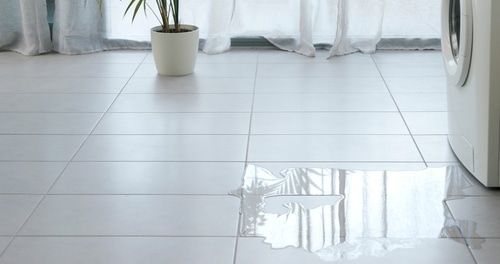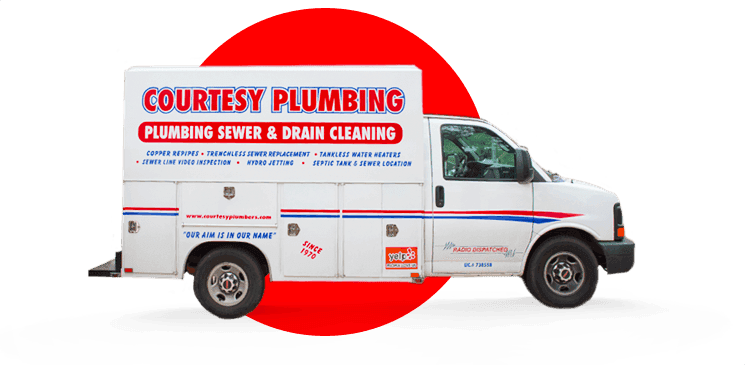If you’re a homeowner, the last thing you want to deal with is a leaky plumbing system. Not only can leaks lead to costly water waste, but they can also cause extensive damage to your property if left unaddressed. That’s why it’s crucial to know how to find and repair leaks around your house. In this article, brought to you by Courtesy Plumbers, we’ll guide you through the steps to identify and fix leaks, saving you both time and money.
Using our expertise in plumbing repairs, we’ll share tips and tricks to help you locate leaks in common areas, such as kitchen sinks, bathroom fixtures, and outdoor pipes. We’ll also provide easy-to-follow instructions on how to tackle these leaks without the need for professional assistance, allowing you to take control of the situation.
Don’t let leaks undermine the comfort and security of your home. Join us as we empower you to become your own plumbing hero by finding and repairing leaks around the house. Let’s get started on a leak-free life together.
Importance of finding and repairing leaks
Leaking pipes or fixtures may seem like minor annoyances, but they can have serious consequences if left untreated. The importance of finding and repairing leaks cannot be overstated. First and foremost, leaks waste water, which is not only detrimental to the environment but also adds unnecessary costs to your monthly water bill. Additionally, leaks can cause damage to your property, leading to costly repairs in the long run. Mold and mildew growth, structural damage, and compromised foundations are just a few examples of the potential consequences of ignoring leaks. By promptly identifying and repairing leaks, you can mitigate these risks and maintain a safe and efficient plumbing system.
Common areas for leaks in a house
Leaks can occur in various areas of your house, and it’s important to be aware of the common trouble spots. One area prone to leaks is the kitchen sink. Over time, the connections between the sink, faucet, and drain can become loose or worn, resulting in leaks. Bathroom fixtures, such as toilets, showers, and faucets, are also common areas for leaks. Toilet leaks, in particular, can be silent and hard to detect, leading to wasted water and potential damage to flooring and walls. Outdoor pipes, such as those used for irrigation or sprinkler systems, are also susceptible to leaks due to exposure to the elements and potential ground shifts. By familiarizing yourself with these common areas, you can be proactive in identifying and addressing leaks before they cause significant damage.
Signs of a leak in your home
Detecting a leak early on is critical in preventing further damage. There are several signs you can look out for to identify a leak in your home. One common indicator is an unexplained increase in your water bill. If your usage hasn’t changed, yet there is a significant spike in your water bill, it could be a sign of an undetected leak. Another sign is the sound of running water when no fixtures are in use. If you hear continuous water flow or dripping noises, it’s worth investigating further. Stains or discoloration on ceilings, walls, or flooring can also indicate a leak. Additionally, mold or mildew growth in unusual areas, such as behind appliances or in cabinets, may be a sign of hidden leaks. Being attentive to these signs can help you catch leaks early and prevent further damage.
Steps to find a leak in your house
Finding a leak in your house can feel like searching for a needle in a haystack, but with a systematic approach, you can narrow down the source. Start by turning off all water-using appliances and fixtures in your home. Check your water meter and record the reading. Wait for a few hours without using water and then check the meter again. If the meter reading has changed, it indicates a leak somewhere in your plumbing system. To identify the specific location, turn off the water supply to individual fixtures one by one and repeat the meter reading test. If the reading changes after turning off a specific fixture, it indicates a leak in that area.
Another method to locate leaks is by visually inspecting the common trouble spots mentioned earlier. Check the connections under sinks, around toilets, and near outdoor pipes for any signs of moisture or dripping. Use a flashlight to inspect hard-to-reach areas and look for water stains or discoloration. If you suspect a hidden leak, you can also perform a dye test by adding food coloring to the toilet tank and waiting to see if the color appears in the bowl without flushing. These step-by-step methods will help you identify the source of the leak and proceed with necessary repairs.
Tools needed for leak detection
Having the right tools can make leak detection and repair easier. Here are some essential tools you may need:
- Flashlight: A reliable flashlight will help you inspect dark or hard-to-reach areas for leaks and signs of water damage.
- Plumber’s Tape: Also known as Teflon tape, plumber’s tape is used to create a watertight seal on pipe threads during repairs or installations.
- Adjustable Wrench: An adjustable wrench is useful for tightening or loosening fittings in your plumbing system.
- Plunger: A plunger is an essential tool for unclogging drains or toilets, which can sometimes cause leaks if left unaddressed.
- Pipe Cutter: If you need to replace a section of pipe, a pipe cutter will help you make clean, precise cuts.
- Leak Detection Dye: This specialized dye is used to identify leaks in toilets by adding it to the tank and observing if the color appears in the bowl.
Having these tools readily available will save you time and effort during leak detection and repair processes.
How to repair a leak in different areas of the house
Once you have identified the source of the leak, it’s time to proceed with the necessary repairs. The specific repair methods will depend on the area of the house where the leak is located. Here are some common areas and steps to repair leaks:
Kitchen Sink Leaks
- Turn off the water supply to the sink by closing the shutoff valves under the sink.
- Check the connections between the sink, faucet, and drain for any loose or damaged parts.
- Tighten any loose connections using an adjustable wrench.
- If necessary, replace worn or damaged parts, such as O-rings or washers.
- Turn the water supply back on and check for any remaining leaks.
Bathroom Fixture Leaks
- For faucet leaks, turn off the water supply to the affected fixture.
- Remove the faucet handle and inspect the cartridge or valve for any signs of damage or wear.
- Replace the cartridge or valve if necessary.
- Reassemble the faucet handle and turn the water supply back on to check for leaks.
- For toilet leaks, start by checking the flapper valve in the tank. If it is worn or damaged, replace it.
- Check the fill valve and adjust it if necessary.
- Inspect the wax ring seal at the base of the toilet for any signs of damage and replace if needed.
- Turn the water supply back on and check for any remaining leaks.
Outdoor Pipe Leaks
- Shut off the water supply to the outdoor pipe.
- Inspect the pipe for any visible cracks or damage.
- If the damage is minor, you can use waterproof tape or epoxy putty to seal the leak temporarily.
- For more significant damage, you may need to cut out the damaged section and replace it with a new pipe.
- Turn the water supply back on and check for any remaining leaks.
Remember to follow safety precautions and shut off the water supply before starting any repairs. If you’re unsure or uncomfortable with any steps, it’s always best to consult a professional plumber.
Preventing future leaks in your home
While it’s essential to know how to repair leaks, prevention is even more crucial. Here are some preventive measures you can take to reduce the risk of future leaks in your home:
- Regular Inspection: Conduct routine inspections of your plumbing system, paying attention to connections, faucets, and visible pipes.
- Maintain Proper Water Pressure: High water pressure can strain your pipes and increase the likelihood of leaks. Install a pressure regulator to keep the pressure within a safe range.
- Avoid Chemical Drain Cleaners: Harsh chemical drain cleaners can corrode pipes over time, leading to leaks. Instead, use natural alternatives or consult a professional for clogged drains.
- Insulate Pipes: Insulating exposed pipes can prevent them from freezing and bursting during colder months, which can cause leaks.
- Address Plumbing Issues Promptly: If you notice any signs of leaks or plumbing problems, address them promptly to prevent further damage.
- Properly Maintain Appliances: Follow manufacturer guidelines for maintenance of appliances such as washing machines, dishwashers, and water heaters to prevent leaks.
By implementing these preventive measures, you can significantly reduce the risk of leaks and maintain a reliable plumbing system in your home.
When to call a professional plumber
While DIY repairs can save you money, there are situations where it’s best to call a professional plumber. Here are some instances when professional assistance is recommended:
- Complex Plumbing Systems: If your plumbing system is complex, with multiple pipes and fixtures, it’s best to rely on a professional plumber who has the expertise to handle intricate repairs.
- Major Leaks: If you have a major leak that is causing extensive damage or flooding, it’s crucial to call a professional plumber immediately to prevent further harm to your property.
- Lack of Experience: If you’re not confident in your plumbing skills or have limited experience with repairs, it’s safer to hire a professional plumber to avoid potential mistakes that could lead to more significant problems.
Remember, professional plumbers have the knowledge, experience, and specialized tools to handle complex plumbing issues effectively. Don’t hesitate to seek their help when needed.
DIY vs. hiring a plumber for leak repair
Deciding whether to tackle leak repairs yourself or hire a professional plumber depends on various factors. DIY repairs can be cost-effective and empowering, especially for minor leaks or simple fixes. However, there are situations where hiring a plumber is the wiser choice. Consider the complexity of the repair, your level of experience, and the potential risks involved. If in doubt, consulting a professional plumber for an assessment can help you make an informed decision.
Conclusion: Importance of regular maintenance for leak prevention
In conclusion, finding and repairing leaks around the house is essential for both your wallet and the integrity of your property. By being proactive in leak detection and promptly addressing any issues, you can save money on water bills, prevent property damage, and maintain a safe and efficient plumbing system. Remember to conduct regular inspections, follow proper repair techniques, and implement preventive measures to reduce the risk of future leaks. When in doubt or faced with complex repairs, don’t hesitate to call a professional plumber. With the knowledge and tips provided in this article, you are now equipped to become your own plumbing hero and enjoy a leak-free life.
Let’s get started on a leak-free life together.



